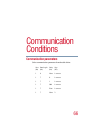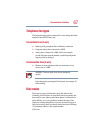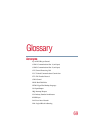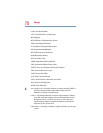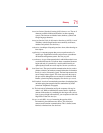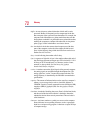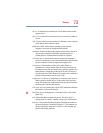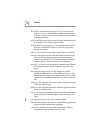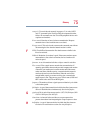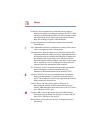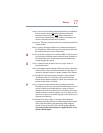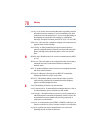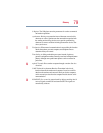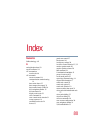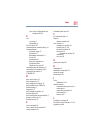
Glossary
74
DCE (Data Communications Equipment or Data Circuit-terminating
Equipment): A device that establishes, maintains and terminates a
session on a network. It may also convert signals for transmission. It
is typically the modem.
DCD signal: This signal tells the personal computer whether the modem
is receiving the carrier from the opposite station
DTE (Data Terminating Equipment): A communications device that is
the source or destination of signals on a network. It is typically a
terminal or computer.
dial tone: The tone that is heard from the handset when it is picked up
dial mode: Dial mode covers pulse dial and tone dial. Pulse dial means
turning the dial or pressing the buttons to send pulse signals to
connect to the called party. Tone dial means pressing the button to
send tone signals to connect the modem to the called party.
download: 1) To receive a file from another computer through a modem.
2) To transmit font data from the computer to a printer. See also
upload.
DSP: A digital signal processor is a chip designed for real-time
applications. DSP techniques are used in PC processors as well as
media engines. For example, some high-end notebooks use a DSP
chip to provide Sound Blaster emulation for the internal modem as
well.
DSR signal: This signal tells the personal computer whether the modem
is ready for communication.
DTR signal: This signal tells the modem whether the personal computer
is ready for communication.
duplex: The method used to transmit data in both directions between two
devices. Synonymous with full duplex. See also half duplex, full
duplex.
E
echo: Displays keyboard entry on the computer terminal.
EIA: Electronic Industries Association is a manufacturers group that sets
standards for data communications equipment.
error control: Detection of errors in data communication. Requests
retransmission of data in which errors were found.



